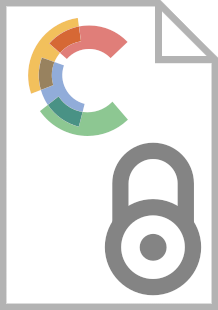Date: 2009
Type: Thesis
Essays on communication and learning
Florence : European University Institute, 2009, EUI, ECO, PhD Thesis
LE QUEMENT, Mark, Essays on communication and learning, Florence : European University Institute, 2009, EUI, ECO, PhD Thesis - https://hdl.handle.net/1814/12038
Retrieved from Cadmus, EUI Research Repository
The first chapter examines the performance of a simple forecasting rule within a complex environment and evaluates the cost of operating with a model that only partially embraces the complexity of the faced serially correlated process. The intuition behind the simple forecasting rule examined is the following: when knowingly facing a serially correlated environment, I may simply forecast at every period the most frequent follower of the outcome observed in the preceding period . Thus, when predicting tomorrow’s weather, I may simply predict the most frequent follower of today’s outcome, whether rain or sun. In the case that we study, the process driving observed outcomes however renders such a strategy imperfect. This strategy, indeed, would be optimal only in the case of a first order Markovian process. In contrast, against the process that we study, a forecaster would always benefit from conditioning his choice on longer sequences of events. Instead of asking, "What usually happens after a rainy day?", he would benefit from asking what happens after more complex chains of events such as for example: "What happens after 2 rainy days or after a sequence of 5 rainy days followed by 2 sunny days?". Comparing the performance of our minimalist forecasting rule to that of the best possible forecaster, we demonstrate that in the particular case of a simple hidden Markovian environment, the highest possible foregone revenue from operating with a poor model is quite limited. Chapter 2 and 3 address the issue of learning within a social environment. The crucial characteristic of learning within social environments is that the available information reduces to what other agents are willing or able to reveal. One may think of information as a .uid that permeates systems of agents. In this light, the issue then becomes to understand the mechanics of this fluid: how does it flow between agents, what are the forces impeding its full diffusion within the system? And if diffusion is only local or partial, what are reasonable models of such partial diffusion processes and equilibrium diffusion patterns?
Table of Contents:
-- Boundedly rational forecasting in Amarkovian environment
-- Cheap talk, multiple senders and endogenous consultation
-- Subgroup deliberation and voting
Additional information:
Defence date: 8 June 2009; Examining Board: Marco Celentani, Universidad Carlos III de Madrid; Olivier Gossner, Paris-Jourdan Sciences Economiques; Karl Schlag, Supervisor, Universitat Pompeu Fabra; Fernando Vega-Redondo, European University Institute; PDF of thesis uploaded from the Library digital archive of EUI PhD theses
Cadmus permanent link: https://hdl.handle.net/1814/12038
Series/Number: EUI; ECO; PhD Thesis
Publisher: European University Institute
LC Subject Heading: Economics -- Methodology; Cognitive science
